
Bas-Rhin is a département in Alsace which is a part of the Grand Est super-region of France. The name means 'Lower Rhine', referring to its lower altitude among the two French Rhine departments: it is downstream of the Haut-Rhin department. Both belong to the European Upper Rhine region. It is, with the Haut-Rhin, one of the two departments of the traditional Alsace region which until 1871, also included the area now known as the Territoire de Belfort. The more populous and densely populated of the pair, it had 1,152,662 inhabitants in 2021. The prefecture is based in Strasbourg. The INSEE and Post Code is 67.
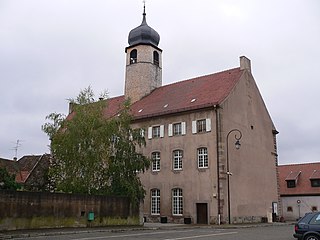
Mutzig is a commune in the Bas-Rhin department in Grand Est, in north-eastern France. The commune of Mutzig is located at the entrance of the Bruche river valley, on the Route des Vins d'Alsace.
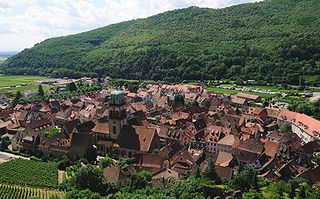
Kaysersberg is a historical town and former commune in Alsace in northeastern France. The name is German for Emperor's Mountain. The high fortress that dominates the town serves as a reminder of both its strategic importance and its warlike past.
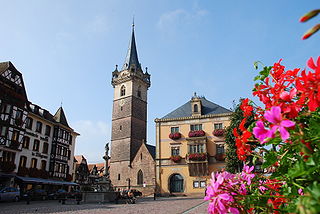
Obernai is commune in the Bas-Rhin department in Alsace in north-eastern France. It lies on the eastern slopes of the Vosges mountains.

Rosheim is a commune in the Bas-Rhin department in Grand Est in north-eastern France.

Sarre-Union is a commune in the Bas-Rhin department in Grand Est in north-eastern France.

Erstein is a commune in the Bas-Rhin department, in the region of Grand Est, France.

Achenheim is a commune in the Bas-Rhin department and Grand Est region of north-eastern France.

Scherwiller is a commune in the Bas-Rhin department in Alsace in northeastern France.

Châtenois is a commune in the Bas-Rhin department in Alsace in north-eastern France.
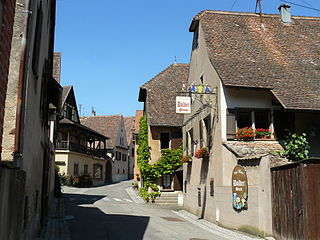
Mittelbergheim is a commune in the Bas-Rhin department in Alsace in north-eastern France.

Barr is a commune in the Bas-Rhin department in the Alsace region of north-eastern France.

Heiligenstein is a commune in the Bas-Rhin department in Alsace in north-eastern France. Its name means holy rock.

Seltz is a commune in the Bas-Rhin department of the Grand Est region in north-eastern France. It is located on the Sauer River near its confluence with the Rhine, opposite the German town of Rastatt.

Bellefosse is a commune in the Bas-Rhin department in Grand Est in northeastern France, historically and culturally part of Alsace.
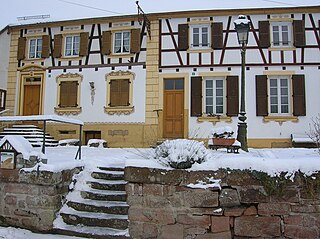
Erckartswiller is a commune, in the Bas-Rhin department in Grand Est in north-eastern France. It is part of the arrondissement of Saverne and the canton of Ingwiller.

Harskirchen is a commune in the Bas-Rhin department and Grand Est region of north-eastern France.

Limersheim is a commune in the Bas-Rhin department in Alsace in north-eastern France. It is a rural tourist destination, boasting several half-timbered houses.

Wasselonne is a commune based in the Bas-Rhin department in north-eastern France, more precisely, in the Grand Est region. The oldest firm of unleavened bread in France: Etablissements René Neymann, is located in this town.
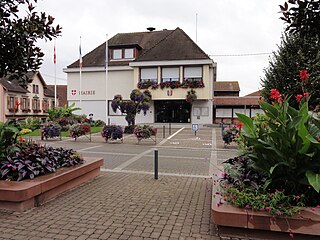
Mommenheim is a commune in the Bas-Rhin department. The department is in the historic Alsace region of France, and is itself within the Grand Est administrative region of north-eastern France.




























